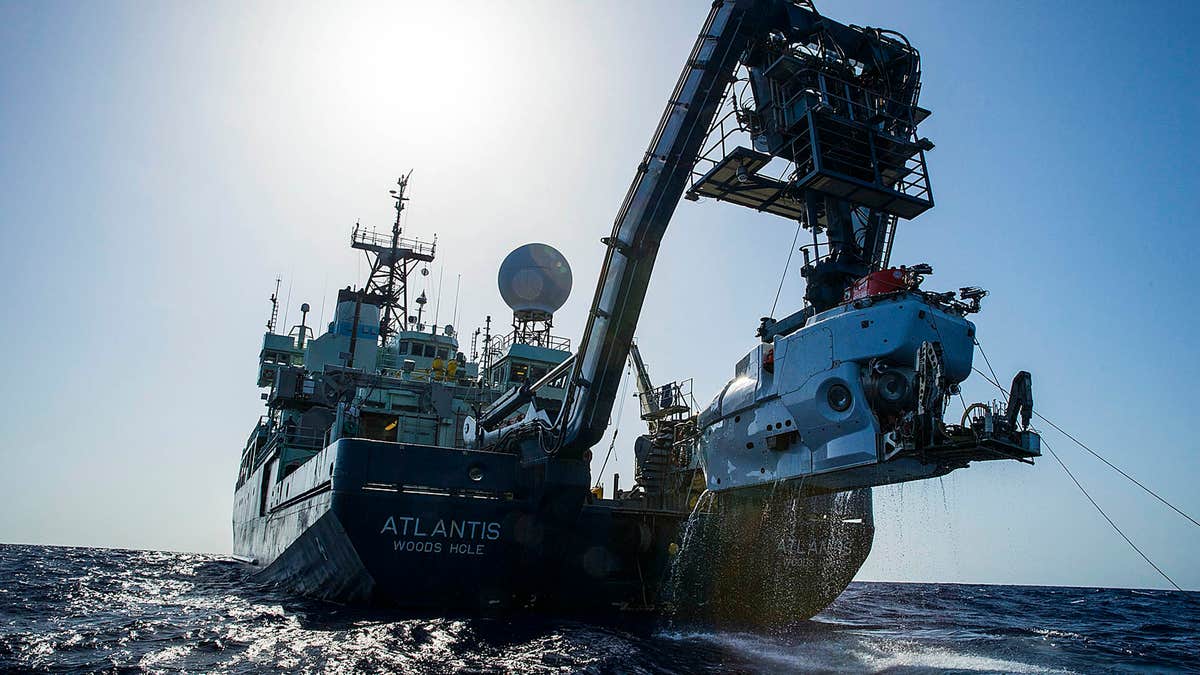
In this image released by, The Woods Hole Oceanographic Institution, the research vessel Atlantis is shown off the coast of the Carolinas in the Atlantic Ocean during the second week of July 2015 with the submersible Alvin hanging off its stern. (AP)
Scientists uncovered a shipwreck off the North Carolina coast, using underwater vehicles and sonar, that could date back to the American Revolution, Duke University said Friday.
Duke marine scientists Cindy Van Dover led the expedition and found the previously unknown wreck in mile-deep waters on July 12 using underwater robot and a manned submarine.
The expedition yielded artifacts including an iron chain, glass bottles, an unglazed pottery jug and navigational instruments such as a metal compass. Archaeologists who examined the photos of the artifacts say the wreck appears to date back as far as the late 18th century, which would make it a rare find.
"This is an exciting find, and a vivid reminder that even with major advances in our ability to access and explore the ocean, the deep sea holds its secrets close," Van Dover, director of the Duke University Marine Laboratory, said in a news release.
The scientists were returning to an area called the Blake Plateau that they had previously explored with sonar.
The expedition also included scientists from North Carolina State University and the University of Oregon aboard a vessel from the Woods Hole Oceanographic Institution. The wreck was found using Woods Hole’s unmanned vehicle Sentry and the manned submarine Alvin.
James Delgado, the director of the Marine Heritage Program. Said the wreck sits about 150 miles offshore in the path of the Gulf Stream, which for centuries had been a maritime trade route. He said in a phone interview with The Associated Press that the wreck could yield significant information about trade by the United States when it was a young country.
He noted that many ships have wrecked off the Carolina coasts over the years, but few have been found because of the difficulty of working at extreme depths.
From the surface, older wooden vessels may show up on sonar only as pixelated dark spots — or not at all — which explains why such finds are rare despite modern efforts to map the sea floor, he said.
"A largely wooden ship, largely now consumed by marine organisms, it's not going to show up," he said. "It's only when you fly closer or when you have eyes on the bottom that you find these wrecks."
The Associated Press contributed to this report.

